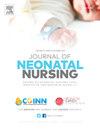涉及父母的非药物干预对早产儿侵入性手术疼痛的比较疗效:系统回顾和网络荟萃分析
Q2 Nursing
引用次数: 0
摘要
背景:各种涉及父母的非药物干预措施在侵入性手术中减少早产儿疼痛的效果尚不清楚。本系统综述和网络荟萃分析旨在比较其有效性。方法系统检索8个数据库(PubMed, ScienceDirect, CINAHL, Embase, Scopus, SAGE Journals, Cochrane Central, ClinicalKey)。分析采用GeMTC软件进行网络元分析。结果共纳入22项随机对照试验,共纳入受试者2036人。袋鼠式母亲护理(KMC)显著降低了疼痛反应(SMD: 1.4; 95% CI: - 2.3至- 0.61)。KMC在治疗过程中减轻疼痛的所有干预措施中排名最高,如脚跟穿刺、静脉穿刺和插管。结论:与标准护理相比,KMC似乎是减轻早产儿疼痛最有效的非药物干预措施,但需要进一步的高质量研究来证实这些发现。本文章由计算机程序翻译,如有差异,请以英文原文为准。
Comparative efficacy of non-pharmacological interventions involving parent on pain during invasive procedure among preterm baby: A systematic review and network meta-analysis
Background
The efficacy of various non-pharmacological interventions involving parents to reduce preterm infants’ pain during invasive procedures remains unclear. This systematic review and network meta-analysis aimed to compare their effectiveness.
Methods
We conducted a systematic search across eight databases (PubMed, ScienceDirect, CINAHL, Embase, Scopus, SAGE Journals, Cochrane Central, ClinicalKey). The analysis used GeMTC software for network meta-analysis.
Results
A total of 22 RCTs including 2036 participants were included. Kangaroo mother care (KMC) significantly reduced pain responses (SMD: 1.4; 95 % CI: −2.3 to - 0.61). KMC ranked highest among all interventions for alleviating pain during procedures such as heel lancing, venipuncture, and cannulation.
Conclusions
While KMC appears to be the most effective non-pharmacological intervention to reduce pain in preterm infants compared to standard care, further high-quality studies are needed to confirm these findings.
求助全文
通过发布文献求助,成功后即可免费获取论文全文。
去求助
来源期刊

Journal of Neonatal Nursing
Nursing-Pediatrics
CiteScore
2.00
自引率
0.00%
发文量
143
期刊介绍:
Aims & Scope: This is the practical, bimonthly, research-based journal for all professionals concerned with the care of neonates and their families, both in hospital and the community. It aims to support the development of the essential practice, management, education and health promotion skills required by these professionals. The JNN will provide a forum for the exchange of ideas and information between the range of professionals working in this field; promote cooperation between these professionals; facilitate partnership care with families; provide information and informed opinion; promote innovation and change in the care of neonates and their families; and provide an education resource for this important rapidly developing field.
 求助内容:
求助内容: 应助结果提醒方式:
应助结果提醒方式:


